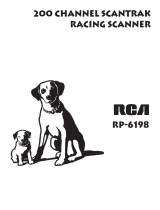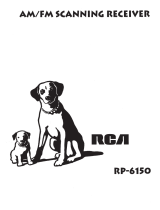
The scanner scans conventional frequencies. A
frequency, expressed in kHz or MHz, is the tuning
location of a station. To find active frequencies,
use the search function or consult an online
resource such as www.radioreference.com.
Besides searching within a selected frequency
range, you can also search your scanner’s service
banks. Service banks are preset groups of
frequencies categorized by the type of services
that use those frequencies. The scanner is
preprogrammed with all the frequencies allocated
to the Ham, Marine, Aircraft, and Police (Fire/
Emergency) services.
When you search and find a desired frequency,
you can store it into a programmable memory
location called a channel. Channels are grouped
into channel-storage banks. Your scanner has 10
channel-storage banks (numbered 0-9) Each bank
contains 20 channels (numbered 0-19). So the
scanner has 200 channels total. You can scan the
channel storage banks to see if there is activity on
the frequencies stored there.
Note: Search for frequencies to find
your local frequencies, after you have
programmed these frequencies into
channels, you can scan the channels.
Use each channel-storage bank to group
frequencies. For example, the police department
might use four frequencies in your town while the
fire department uses an additional four. You could
program the police frequencies in bank 0, and
program the fire department frequencies in bank 1.
Birdie Frequencies
Every scanner has birdie frequencies. Birdies are
signals created by the scanner’s internal circuits.
These stray frequencies might interfere with
broadcasts on the same or similar frequencies. If





















